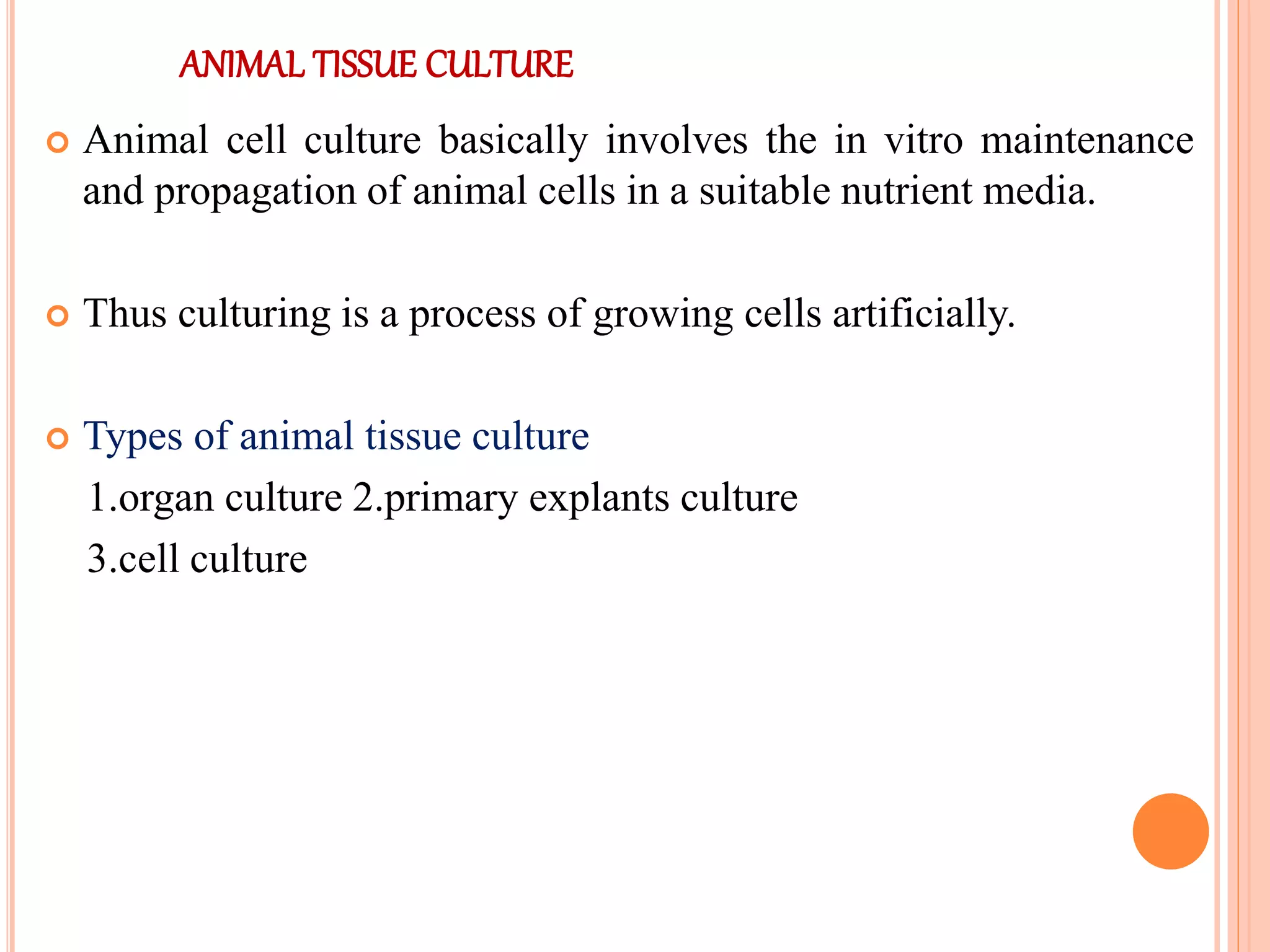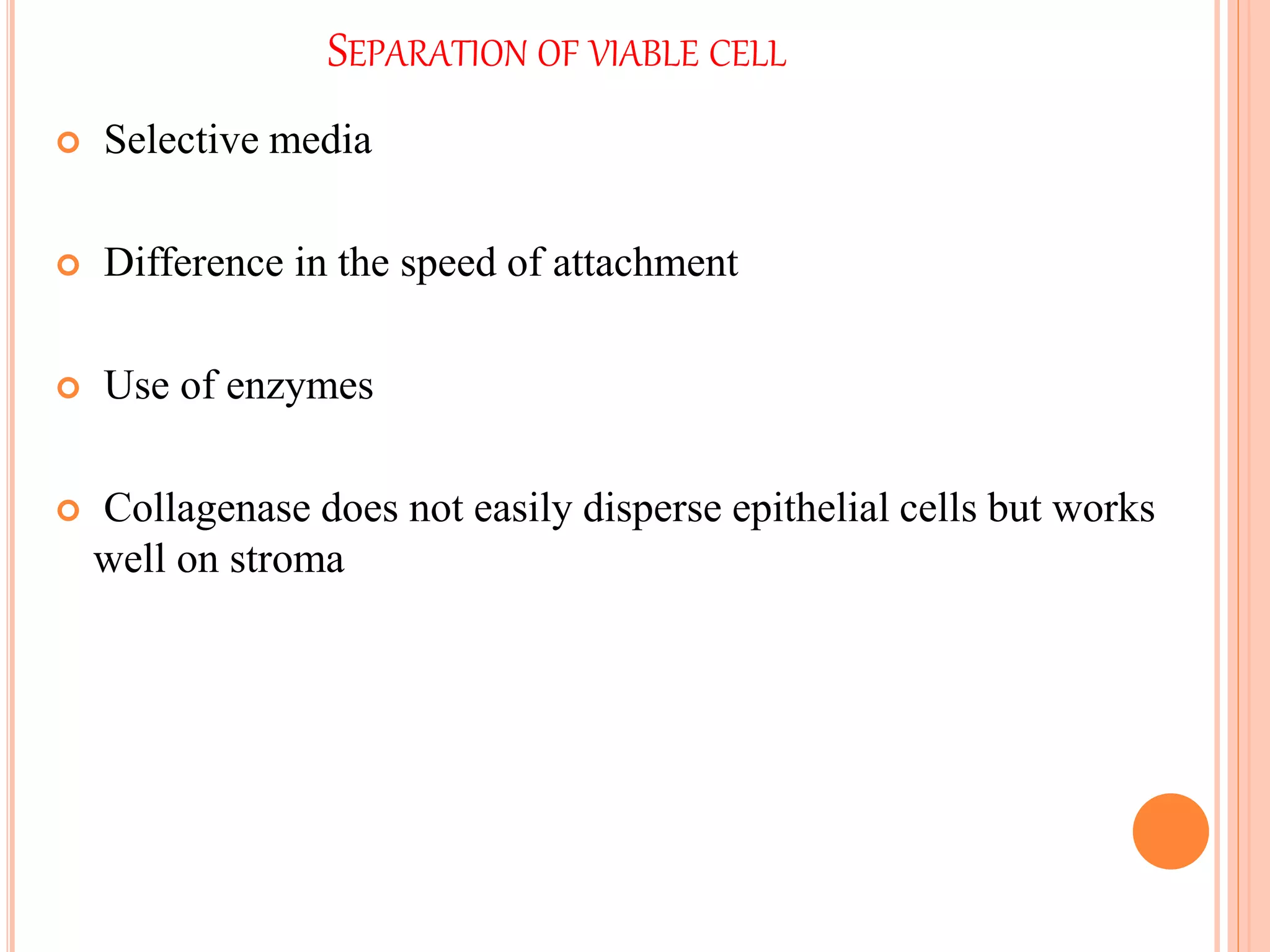The document discusses the process of animal cell culture, explaining primary and established cell line culture techniques, including isolation, disaggregation of cells, and types of cultures such as organ culture and primary explant culture. It outlines steps for primary culture, advantages and disadvantages of various methods, and the distinctions between finite and continuous cell lines. Additionally, the document covers naming, selecting, and maintaining cell lines, emphasizing the importance of stability and validity in cell line research.












![PRIMARY EXPLANT CULTURE
The primary explant technique was the original method developed
by Harrison [1907], Carrel [1912].
As originally performed, a fragment of tissue was embedded in
blood plasma or lymph, mixed with heterologous serum and
embryo extract, and placed on a cover slip that was inverted over a
concavity slide.](https://image.slidesharecdn.com/primaryandestablishedcelllineculture-200515065652/75/Primary-and-established-cell-line-culture-13-2048.jpg)







![spillage: collecting the cells that spill
out when the tissue is carefully sliced
and the slices scraped [Lasfargues,
1973].
sieving: pressing the dissected tissue
through a series of sieves for which
the mesh is gradually reduced in size.
syringing: forcing
the tissue fragments through a syringe
(with or without a
wide-gauge needle) [Zaroff et al.,
1961]
MECHANICAL DISAGGREGATION](https://image.slidesharecdn.com/primaryandestablishedcelllineculture-200515065652/75/Primary-and-established-cell-line-culture-21-2048.jpg)











